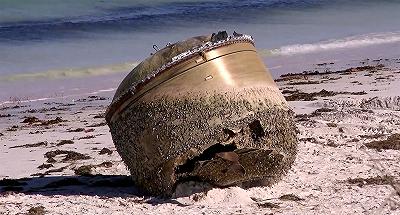[image]https://leganerd.com/wp-content/uploads/LEGANERD_037025.jpg[/image]
Sulla Lega abbiamo dato ampio spazio al [url=https://leganerd.com/tag/bp/]disastro[/url] ecologico (ma non solo, anche economico e sociale) causato nel golfo del Messico dell’esplosione della piattaforma petrolifera “Deep Water Horizon”.
Se qualcuno volesse sapere com’è andata a finire e qual è stato l’esito dell’inchiesta ordinata dal presidente [b]Obama [/b]potrebbe dare un’occhiata al [b]report finale[/b] pubblicato qualche giorno fa a questo [url=http://blog.quintarelli.it/files/bp_final_report.pdf]Link[/url].
Il report analizza nel dettaglio la cronaca e le cause della tragedia, descrive la storia dello sfruttamento dei giacimenti offshore, le leggi che lo regolano, i tentativi di chiudere il pozzo, le conseguenze del disastro e le azioni correttive proposte al Governo.
Una lettura molto interessante, ricca di informazioni, fotografie e grafici, di cui vi anticipo le conclusioni:
[quote]• [b]The explosive loss of the Macondo well could have been prevented[/b].
• The immediate causes of the Macondo well blowout can be traced to a series of identifiable mistakes made by BP, Halliburton, and Transocean that reveal such systematic failures in risk management that [b]they place in doubt the safety culture of the entire industry[/b].
• Deepwater energy exploration and production, particularly at the frontiers of experience, involve risks for which neither industry nor government has been adequately prepared, but for which they can and must be prepared in the future.
• To assure human safety and environmental protection, regulatory oversight of leasing, energy exploration, and production require reforms even beyond those significant reforms already initiated since the Deepwater Horizon disaster. [b]Fundamental reform will be needed[/b] in both the structure of those in charge of regulatory oversight and their internal decisionmaking process to ensure their political autonomy,
technical expertise, and their full consideration of environmental protection concerns.
• Because regulatory oversight alone will not be sufficient to ensure adequate safety, [b]the oil and gas industry will need to take its own, unilateral steps to increase dramatically safety throughout the industry[/b], including self-policing mechanisms that supplement governmental enforcement.
• The technology, laws and regulations, and practices for containing, responding to, and cleaning up spills lag behind the real risks associated with deepwater drilling into large, high-pressure reservoirs of oil and gas located far offshore and thousands of feet below the ocean’s surface. Government must close the existing gap and industry must support rather than resist that effort.
• Scientific understanding of environmental conditions in sensitive environments in deep Gulf waters, along the region’s coastal habitats, and in areas proposed for more drilling, such as the Arctic, is inadequate. The same is true of the human and natural impacts of oil spills.[/quote]
Mi pare un’analisi chiara e che, senza tanti fronzoli, assegna responsabilità ed azioni correttive a tutti gli stakeholder.
L’industria petrolifera è però una formidabile macchina da guerra e come le precedenti amministrazioni Bush ci hanno dimostrato, è realmente capace di scatenare vere guerre.
Staremo a vedere se Obama sarà capace di ridimensionare e mettere sotto controllo lo strapotere di questa industria.








